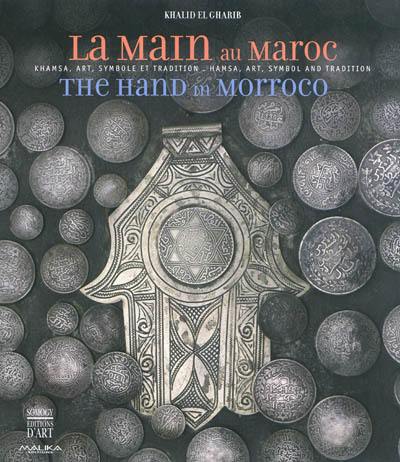
Fiche technique
Format : Relié sous jaquette
Nb de pages : 205 pages
Poids : 1582 g
Dimensions : 26cm X 29cm
ISBN : 978-2-7572-0512-9
EAN : 9782757205129
La main au Maroc
khamsa, art, symbole et tradition
Quatrième de couverture
La Khamsa emprunte sa forme à la main.
Elle épouse un vocabulaire universel et, avec l'oeil, illustre l'ambivalence des sentiments humains. On désire comme on déteste, d'un simple regard. On aime comme on combat, avec la main.
La collection de Khalid El Gharib propose, au-delà des superstitions primitives et des multiples expressions identitaires, la première anthologie artistique et esthétique sur les représentations de la main. Ces pièces, collectées dans toutes les aires culturelles du Maroc, donnent à voir des bijoux en métal noble, des imprimés, des lampes, des ex-voto, des vêtements, des tissages, des broderies, des manuscrits, des amulettes et les multiples objets utilitaires qui entourent aussi bien la vie quotidienne que les grandes cérémonies.
À travers ce livre, Khalid El Gharib porte un regard sensible sur ces artisans et orfèvres, musulmans et juifs, qui, dans une complicité fraternelle, ont façonné des formes et offert une identité et des styles dont les arts marocains se confortent toujours.
The Hamsa emulates the shape of the hand.
Its vocabulary is universal and, with the eye, it illustrates the ambivalence of human feelings. One likes just as one hates, at a glance. One loves just like one fights : with the hand.
Khalid El Gharib's collection offers, beyond primitive superstitions and the many expressions of identity, the first artistic and aesthetic anthology of the representations of the hand. These items come from all of Morocco's cultural spheres : there are jewels made out of fine metal, printed matter, lamps, ex-votos, clothes, weaves, pieces of embroidery, manuscripts, amulets and the numerous functional objects used in everyday life, as well as for special occasions.
With this book, Khalid El Gharib takes a sensitive look at these Muslim and Jewish craftsmen and goldsmiths who, with brotherly complicity, made these objects and invented an identity and styles which still nurture Moroccan arts today.





